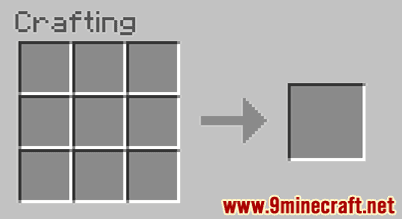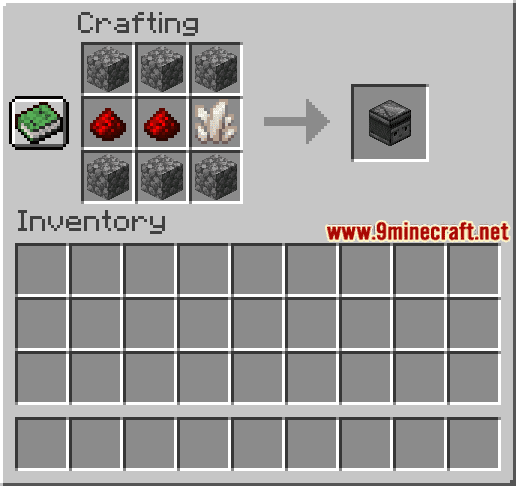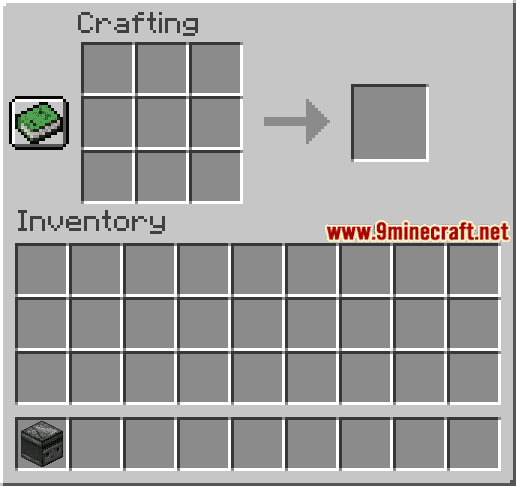Observer Wiki Guide
This Minecraft tutorial explains how to craft an observer with screenshots and step-by-step instructions.
In Minecraft, an observer is another important item in your inventory. It is used to detect changes in neighboring blocks.

Let’s explore how to make an observer.
Where to find an Observer in Creative Mode
Minecraft Java Edition (PC/Mac)
Here is where you can find an observer in the Creative Inventory menu:
| Platform | Version(s) | Creative Menu Location |
|---|---|---|
 Java Edition (PC/Mac) Java Edition (PC/Mac) |
1.11 – 1.19 |  Redstone Redstone |
 Java Edition (PC/Mac) Java Edition (PC/Mac) |
1.19.3 – 1.19.4 |  Redstone Blocks Redstone Blocks |
- Platform is the platform that applies.
- Version(s)Â is the Minecraft version numbers where the item can be found in the menu location listed (we have tested and confirmed this version number).
- Creative Menu Location is the location of the item in the Creative Inventory menu.
Required Materials to make an Observer
In Minecraft, these are the materials you can use to craft an observer:
2 Redstone Dust
1 Nether Quartz
6 Cobblestones
How to craft an Observer in Survival Mode
1. Open the Crafting Menu
First, open your crafting table so that you have the 3×3 crafting grid that looks like this:

2. Add Items to make an Observer
In the crafting menu, you should see a crafting area that is made up of a 3×3 crafting grid. To make an observer, place 6 cobblestones, 2 redstone dust and 1 nether quartz in the 3×3 crafting grid.
When making an observer, it is important that the items are placed in the exact pattern as the image below. In the first row, there should be 3 cobblestones. In the second row, there should be 1 redstone dust in the first box, 1 redstone dust in the second box and 1 nether quartz in the third box. In the third row, there should be 3 cobblestones. This is the Minecraft crafting recipe for an observer.

Now that you have filled the crafting area with the correct pattern, the observer will appear in the box to the right.

3. Move the Observer to Inventory
Once you have crafted an observer, you need to move the new item to your inventory.

Congratulations, you have made an observer in Minecraft!
Item ID and Name
Minecraft Java Edition (PC/Mac)
In Minecraft, an observer has the following Name, ID and DataValue:
| Description (Minecraft ID Name) |
Data Value | Stack Size | Platform | Version(s) |
|---|---|---|---|---|
| Observer (minecraft: |
0 | 64 |  Java Java |
1.11 – 1.12 |
| Observer (minecraft: |
64 |  Java Java |
1.13 – 1.19.4 |
- Description is what the item is called and (Minecraft ID Name) is the string value that is used in game commands.
- Data Value (or damage value) identifies the variation of the block if more than one type exists for the Minecraft ID.
- Stack Size is the maximum stack size for this item. While some items in Minecraft are stackable up to 64, other items can only be stacked up to 16 or 1. (NOTE: These stack sizes are for vanilla Minecraft only. If you are running a mod, some mods may change the stack size for an item.)
- Platform is the platform that applies.
- Version(s)Â is the Minecraft version numbers that the Minecraft ID and Name are valid for.
Give Command for Observer
Give Command in Minecraft Java Edition (PC/Mac)
In Minecraft Java Edition (PC/Mac) 1.13, 1.14, 1.15, 1.16, 1.17, 1.18, 1.19 and 1.19.4, the /give command for Observer is:
/give @p observer 1
In Minecraft Java Edition (PC/Mac) 1.11 and 1.12, the /give command for Observer is:
/give @p observer 1 0
Things to Do with an Observer
Here are some activities that you can do with observers in Minecraft:
How to use an Observer
Build a Potion Trap using an Observer
Build an Automatic Farm using an Observer
Build a Flying Machine using an Observer